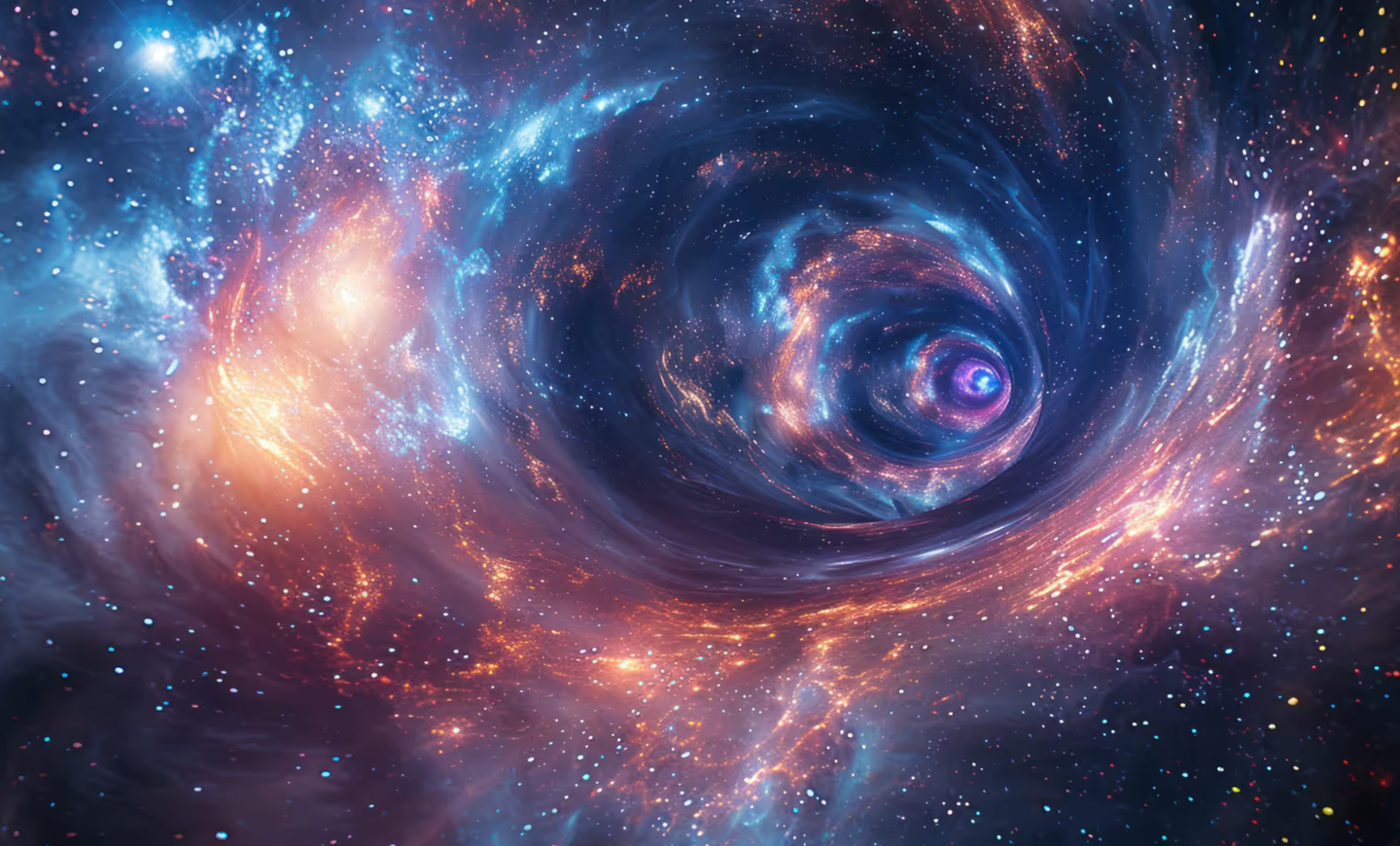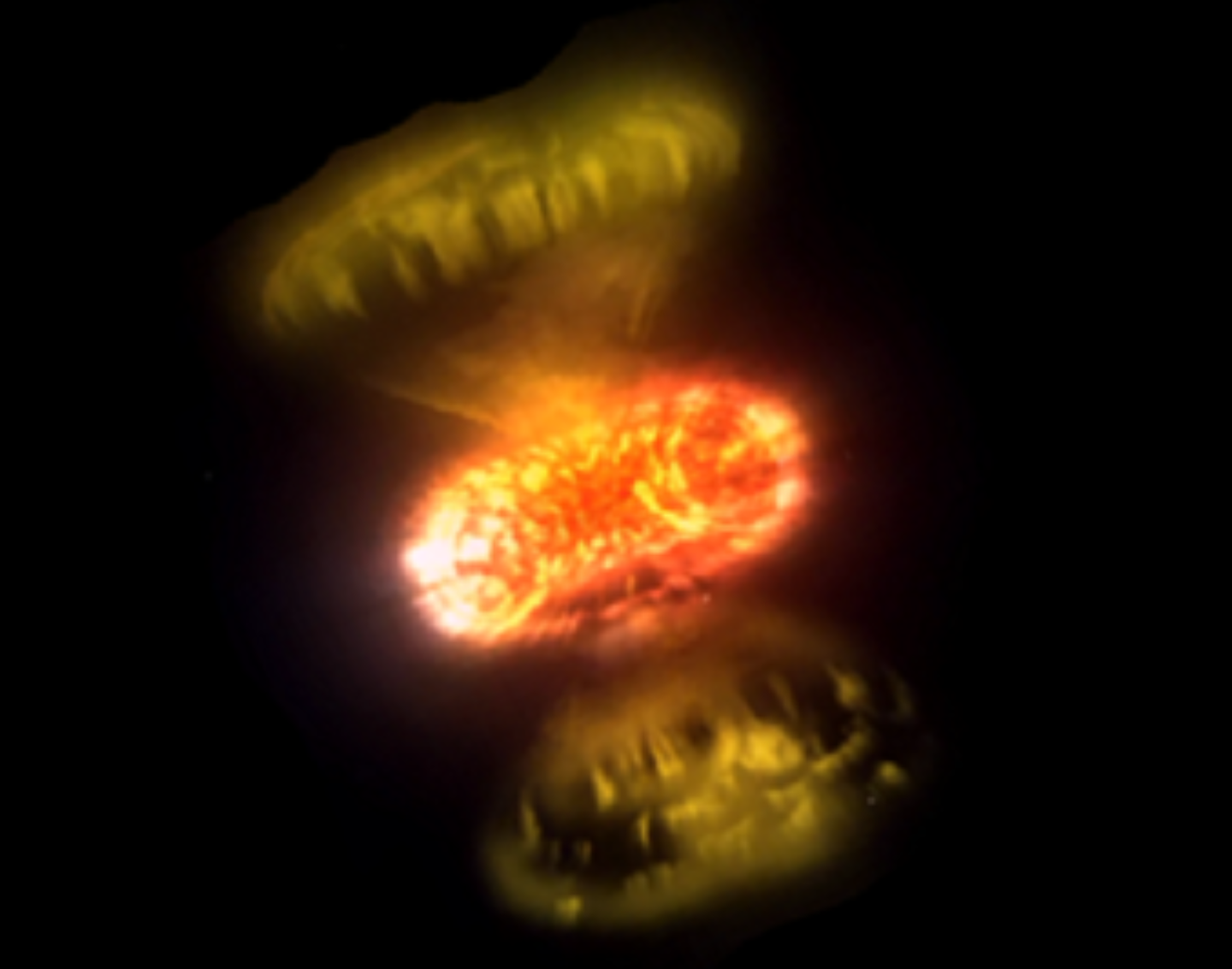Earth resides near a cosmic gateway that could connect us to other worlds
Scientists believe that long-ago supernova explosions sculpted this vast bubble, blasting away surrounding interstellar gas.

Scientists discovered a tunnel toward Centaurus, possibly part of a larger network of hot gas channels in the Milky Way. (CREDIT: Adobe Stock Images)
The solar system floats inside a vast, million-degree hot bubble—an invisible cocoon of thin gas that glows in X-ray light. Known as the Local Hot Bubble (LHB), this low-density cavity stretches more than 1,000 light-years across. Despite its scorching temperature, its sparse atoms barely affect surrounding matter. That quiet warmth may have helped life flourish on Earth, but for decades, the bubble's true shape and origin remained a puzzle.
Now, thanks to a sharp-eyed space telescope and a team of scientists in Germany, the picture is finally coming into focus.
A clearer view of a cosmic mystery
The Max Planck Institute for Extraterrestrial Physics led the effort to map the LHB in unprecedented detail. Using eROSITA, an X-ray telescope positioned 1.5 million kilometers from Earth, the team examined soft X-ray emissions—light with energy around 0.2 electronvolts that struggles to travel far through interstellar dust. That’s exactly why this telescope’s position outside Earth’s outermost atmospheric layer, or geocorona, mattered so much. From there, eROSITA avoided the X-ray “noise” created by solar wind interactions with Earth’s atmosphere.
Observations were taken during a solar minimum, the quietest phase of the Sun’s 11-year cycle. With fewer solar wind particles, there was less interference. "In other words, the eRASS1 data released to the public this year provides the cleanest view of the X-ray sky to date, making it the perfect instrument for studying the LHB," said lead researcher Michael Yeung.
The team divided the sky into 2,000 slices and studied the X-ray glow in each one. What they found changed the story.
A lumpy, stretching bubble
Far from being a smooth sphere, the Local Hot Bubble bulges unevenly and stretches more easily in some directions. It expands more freely toward the galactic poles, avoiding the denser mid-plane of the Milky Way. This didn’t surprise the researchers, who expected hot gas to move toward areas with less resistance.
Related Stories
- Subatomic wormholes could be responsible for universal expansion
- New tachyon study could unlock the secrets of time travel and reality
- Quantum breakthrough paves way for world-first experimental wormhole
But the shape wasn’t just stretched—it was oddly lumpy and jagged.
“It’s spikier and bumpier,” said Michael Freyberg, a co-author on the study. He compared the LHB’s structure to a bipolar nebula but pointed out that this bubble's edges seem rougher and more complex. This irregularity likely reflects the chaotic forces that shaped it: multiple overlapping supernova explosions and feedback from other stars.
One of the most surprising discoveries was a previously unknown tunnel. Stretching in the direction of the constellation Centaurus, this interstellar passage may connect the LHB with a neighboring superbubble.
“What we didn’t know was the existence of an interstellar tunnel towards Centaurus, which carves a gap in the cooler interstellar medium,” Freyberg explained. This feature, invisible until now, stood out thanks to eROSITA’s sharper sensitivity and smarter survey design.
More than just a bubble
The idea of the LHB goes back at least 50 years. Scientists originally proposed it to explain faint X-ray readings that shouldn’t have reached us through thick interstellar dust. The lack of dust around our solar system hinted at a cavity of hot, thin gas—the bubble we now know surrounds us.
But in 1996, doubts crept in when researchers found that similar X-rays could come from interactions between solar wind and Earth’s outer atmosphere. That threw early LHB theories into question.
Now, eROSITA has helped settle that debate. Because it observes from outside Earth’s interference zone and during a solar lull, the data confirms that much of the soft X-ray background is real—and it’s coming from the LHB.
The team found something else: a temperature difference across the bubble. The southern part of the LHB is warmer than the northern side. This may point to recent heating events, possibly new supernova explosions that reheated sections of the bubble in the last few million years.
These new findings suggest the LHB isn't just a leftover from ancient stars. It's part of an active, changing galactic landscape shaped by “stellar feedback”—the energy and matter blasted out by dying stars and newborn ones.
A tunnel network through the stars?
The Centaurus tunnel may be just one part of a larger system of tunnels, like arteries running through the galaxy. These gaps between cold clouds might link the LHB to distant features such as the Gum Nebula or other superbubbles like GSH238+00+09. One such passage, the Canis Majoris tunnel, had been discovered earlier and also seems to connect two massive voids.
The idea of a network of tunnels suggests the Milky Way isn’t just a mix of gas and stars—it’s an interconnected structure constantly shaped by explosive energy.
To support this idea, the team mapped dense molecular clouds at the bubble’s edges. Some are moving outward, as though pushed there by the original explosions that carved out the LHB. These clouds may hold clues to when the bubble formed.
“Another interesting fact is that the sun must have entered the LHB a few million years ago, a short time compared to the age of the sun [4.6 billion years],” said co-author Gabriele Ponti. He added that the Sun’s current location near the bubble’s center is likely pure coincidence. As the solar system orbits the Milky Way, it drifts through many such cosmic environments.
What comes next?
The 3D model built by the team doesn’t just show the LHB—it includes supernova remains, molecular clouds, dust, and known tunnels. It paints a colorful, layered picture of the solar system’s galactic neighborhood.
More surprises could be hidden inside the data. If the galaxy truly contains a web of hot, X-ray-glowing bubbles connected by tunnels, mapping them could offer new insights into how stars die, how galaxies evolve, and how cosmic material moves between star systems.
The results were published in Astronomy & Astrophysics and mark a major step in understanding not just the Local Hot Bubble, but the dynamic, often explosive forces that shape the space between stars.
Other Superbubbles close to Earth
Superbubbles are vast cavities in space filled with hot, low-density gas, often created by the combined activity of supernovae and stellar winds from massive stars. The LHB above is the closest superbubble to Earth. The next nearest superbubbles are:
Loop I Bubble
- Distance: About 400-500 light-years from Earth.
- Description: A large superbubble associated with the Scorpius-Centaurus OB association. It is thought to have been created by multiple supernovae and stellar winds from massive stars in this region.
- Connection to Local Bubble: The Loop I Bubble interacts with the Local Bubble, forming a boundary known as the "interaction zone."
Orion-Eridanus Superbubble
- Distance: Approximately 500-1,000 light-years.
- Description: Located in the Orion and Eridanus constellations, this superbubble was formed by supernovae and winds from the massive stars in the Orion OB1 association.
- Features: It encompasses the famous Orion Nebula and extends toward the Eridanus constellation.
Loop II and III Bubbles
- Distance: Both are several hundred light-years away.
- Description: These superbubbles are associated with other star-forming regions and supernova remnants but are less well-defined than Loop I.
These superbubbles play a significant role in shaping the structure of the Milky Way, influencing star formation and the dynamics of interstellar gas.
Note: Materials provided above by The Brighter Side of News. Content may be edited for style and length.
Like these kind of feel good stories? Get The Brighter Side of News' newsletter.



